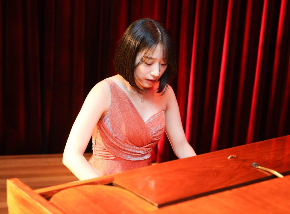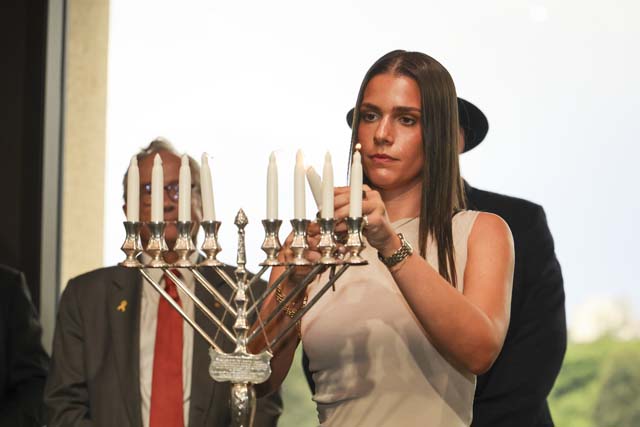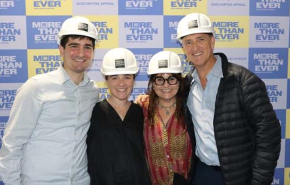From Australia’s Jewish Past
Stefan Friedrich Smerd – world-renowned solar physicist

Stefan Smerd
Stefan was born on 28 July 1916 in Vienna, the second son of Rudolf Smerd, a mathematician, and his wife Marie.
He showed an early love of science and went on to study physics at the Technische Hochschule from 1935-37. Due to the deteriorating political situation in Europe, he and his elder brother Hans migrated to Britain in 1938. There, he won a scholarship to the University of Liverpool, where he completed a Bachelor of Science in 1942 and a Doctorate in 1965. Although he was interned in Canada for almost a year owing to his nationality, he completed his degree with first-class honours in physics.
For the remainder of World War II, Stefan was employed by the University of Birmingham and the Admiralty Signals Establishment at Witley, Surrey, on secret projects connected with the development of radar. His experience enabled him to obtain a position in the radio-physics division with the Council for Scientific and Industrial Research (Commonwealth Scientific and Industrial Research Organisation from 1949).
Stefan left the UK and arrived in Sydney on 29 May 1946, nine days after his widowed father reached Melbourne from Egypt. Soon after his arrival, he married a CSIRO laboratory assistant, and the couple had four children: one daughter and three sons.
By 1948, Stefan was working with Joe Pawsey, an Australian scientist, radio-physicist, and radio astronomer, on theoretical aspects of the new field of radio astronomy. Stefan acquired a strong interest in radio emission from the sun, and very quickly gained an international reputation for his work on thermal processes in the ‘quiet’ sun and for that on the extremely energetic non-thermal phenomena associated with solar disturbances. Although his work was largely theoretical, he was particularly fascinated by the observational side of solar radio astronomy. He applied his theories to many practical problems and developed a deep insight into the sun’s physical processes.
As one of the world’s leading solar physicists, Stefan received numerous invitations to attend conferences and join scientific committees. He established a world data centre for solar radio emission during the International Geophysical Year (1957-58), became an active member of the International Astronomical Union, travelled extensively, and formed close professional and personal contacts with scientists the world over.
In 1971 Stefan succeeded his long-term colleague John Paul Wild as head of the solar radio astronomy group and director of the C.S.I.R.O. solar observatory at Culgoora, near Narrabri, New South Wales. Although the administrative responsibilities increased his workload, he accepted this new challenge enthusiastically and used his knowledge as a catalyst to stimulate and motivate those around him.
Beyond his scientific pursuits, Stefan maintained his interest in politics, sports, and community activities. Stemming from a humane and slightly old-fashioned form of socialism, his social philosophy championed the cause of the underprivileged. His keen sense of humour, rich, deep voice and charming nature endeared him to his friends and colleagues. Stefan died on 20 December 1978 while undergoing heart surgery at Royal Prince Alfred Hospital, Sydney.
The following is an extract from a speech given by John Paul Wild before a lecture to commemorate Stefan’s memory. “He was an esteemed and much-loved colleague. The fact that there was a spontaneous move to pay our respects in this unusual way, dedicating an international scientific symposium to honour his memory, must mean that we are dealing with a special individual as a scientist. What do we remember about Stefan, known as Steve by his colleagues the scientist, that was special? I do not think it will be, especially for his writings and publications. Although these included some that were definitive and highly significant, they were rather few. Steve was not a good communicator through the written word. Though strictly logical, in a teutonic sort of way, his sentences never quite terminated, and their comprehension sometimes demanded of the reader the same kind of determined concentration as is required in the solution of a second-order differential equation; he needed, and usually has, a co-author or a helper. To his Sydney-based colleagues by far his most famous writings were universally known as T the unpublished works of S.F. Smerd1 – these, the mighty efforts that never quite came to the public eye, were voluminous indeed. No, Steve’s method of communication was not through writing, but rather through a kind of oral evangelism. Paul Simon of Meudon Observatory, himself the holder of holy orders, once told me that a visit from Steve was like a visit from the Pope himself. It was not the fact that Steve was sometimes inclined to pontificate but rather that, though a modest and self-effacing man, he spoke with such authority and omniscient confidence about everything that one was left in no doubt that here indeed was the true word spoken by the priest from on high. Steve had many interests. I think always of his intense interest in politics which I described on another, more solemn occasion, as lying somewhere between old-fashioned liberalism and old-fashioned socialism. But his abiding interest above all else, was the central point of his profession – the Sun. And in talking of the Sun and its basic understanding he interacted marvellously with his colleagues the world over. That is what makes him so special. Finally, some of us will remember Steve, outside his work domain, as a person of great sincerity, humility, and humour. I believe, that you will all agree he was a tremendous asset at international conferences. But perhaps only those of you who saw him on his home ground saw the complete Steve: with his family; and occasionally, the life and soul of the party, with his guitar.
The AJHS acknowledges the following references in the preparation of this story:
Australian Dictionary of Biography – Peter Robertson; personal papers from the CSIRO; National Library of Australia – From Strauss to Matilda Viennese in Australia – 1938 – 1988

The Australian Jewish Historical Society is the keeper of archives from the arrival of the First Fleet in 1788 right up to today. Whether you are searching for an academic resource, an event, a picture or an article, AJHS can help you find that piece of historical material. The AJHS welcomes your contributions to the archives. If you are a descendant of someone of interest with a story to tell, or you have memorabilia that might be of significance for the archives, please make contact via www.ajhs.com.au or [email protected].








